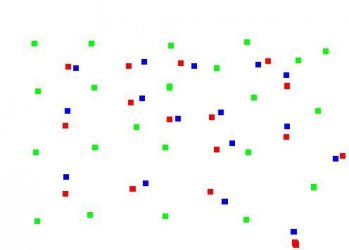....These models have as inputs the amount of CO2 that was present as each time -- both natural and manmade. Obviously, the manmade CO2 was very small at the beginning and then continuously rises. Given that the models accurately recreate the past almost perfectly, their predictions into the future need to be considered seriously. And what those models predict is not good. These models aren't just something a few guys bang out in a weekend -- these scientists have spent their lives making sure the computational methods, the inputs, and the results are all as accurate as they can be. They hold conferences where other scientists can pick over and point out mistakes in the models in the attempt to make them better. The models we have a very good. Not perfect by any means, and there are certainly plenty of areas of improvement, but they are very good. If you don't believe the models, you can read in the scientific literature exactly what the models are doing, and why every choice along the development of the model was made. It is all out there.
Do you think that Michael Mann`s hockey stick graph still has enough credibility to underpin the IPCC?
....the first movie states that climate change is not due to co2 at all, in fact the co2 readings go up AFTER the temperature goes up,
Any chance of a peer-reviewed citation for this fact?
Al Gore used a graph based on ice core readings over the last 500,000 years, which showed a direct correlation between the rises in CO2 levels and rises in temperatures. What he failed to realise was that CO2 fluctuations followed the temperature rises, not triggering them. It was professor Ian Clark, an expert on ice cores from Ottawa University who pointed out that the CO2 rise can lag behind the temperature rise by as much as 800 years.
Dr Carl Wunsch, professor of physical oceonography at MIT pointed that the oceans are far and away the largest reservoirs of CO2 on the planet. When temperatures drop the oceans absorb more CO2, and then release it during periods of warming. The inertia of a system as large as this results in the fluctuations in CO2 levels lagging behind fluctuations in temperature.
Ice Core Records of Atmospheric CO2 Around the Last Three Glacial Terminations. H. Fischer,
et al (1999) Science 283, 1712 1714.
Timing of Atmospheric CO2 and Antarctic Temperature Changes Across Termination III. N. Caillon,
et al (2003) Science 299, 1728 1731.
Here are some fundamental questions put forward to the Australian Government by Senator Stephen Fielding, as advised by four of his expert advisors, to Climate Change Minister Penny Wong in June 2009:
Was it the case that CO2 levels had risen by 5% since 1998, while temperatures had cooled? If so, how could human activity be blamed for causing dangerous warming?
Did the minister agree that the rate and magnitude of warming between 1979 and 1998 was not unusual in the light of previous warmings in world history? If so, why was CO2 perceived as to have been the cause of just this latest warming, and why was warming seen to be such a problem if the planet has survived similar events in the past?
Was it the case that the IPCC`s computer models had predicted continuous warming between 1990 and 2008, whereas in reality temperatures had shown eight years of warming followed by nine years of cooling?


 /blogs.telegraph.co.uk/news/jamesdelingpole/100017393/climategate-the-final-nail-in-the-coffin-of-anthropogenic-global-warming/
/blogs.telegraph.co.uk/news/jamesdelingpole/100017393/climategate-the-final-nail-in-the-coffin-of-anthropogenic-global-warming/